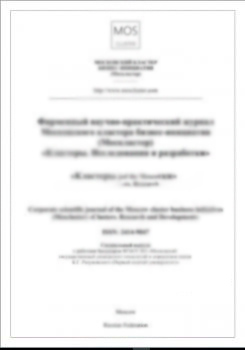Aim: to evaluate separately the fractional composition of dust particles (PM – particle matter) micro- (from 10 μm to 100 nm, PM10) and nanofractions (less than 100 nm, PM0.1), as well as their biological effect by the DNA comet method on a culture of lung fibroblasts MRC-5. The most abundant were 1.1-1.3 µm and 50-80 nm particles in micro- and nanofractions, respectively. A high level of DNA disease is found in samples exposed to PM0.1 in searches with PM10.
dust particles, coal-rock particles, PM10, PM0.1, DNA comets, TEM, MRC-5
1. Aneja,V.P. et al. Particulate matter pollution in the coal-producing regions of the Appalachian Mountains: Integrated ground-based measurements and satellite analysis // Journal of the Air & Waste Management Association. 2017. Vol. 67, № 4. P. 421-430.
2. Espitia-Pérez, L. et al. Cytogenetic instability in populations with residential proximity to open-pit coal mine in Northern Colombia in relation to PM10 and PM2.5 levels // Ecotoxicology and Environmental Safety. 2018. Vol. 148. P. 453-466.
3. Furuyama, A. et al. Extrapulmonary translocation of intratracheally instilled fine and ultrafine particles via direct and alveolar macrophage-associated routes // Arch Toxicol. 2009. Vol. 83, № 5. P. 429-437.
4. Ghose, M.K., Majee, S.R. Characteristics of Hazardous Airborne Dust Around an Indian Surface Coal Mining Area // Environ Monit Assess. 2007. Vol. 130, № 1-3. P. 17-25.
5. OECD. Test No. 489: In Vivo Mammalian Alkaline Comet Assay. OECD, 2016.
6. Singh, N.P. et al. A simple technique for quantitation of low levels of DNA damage in individual cells // Experimental Cell Research. 1988. Vol. 175, № 1. P. 184-191.
7. Benjamini, Y., Yekutieli, D. The control of the false discovery rate in multiple testing under dependency // Ann. Statist. 2001. Vol. 29, № 4.
8. Kwon, H.-S., Ryu, M.H., Carlsten, C. Ultrafine particles: unique physicochemical properties relevant to health and disease // Exp Mol Med. 2020. Vol. 52, № 3. P. 318-328.





